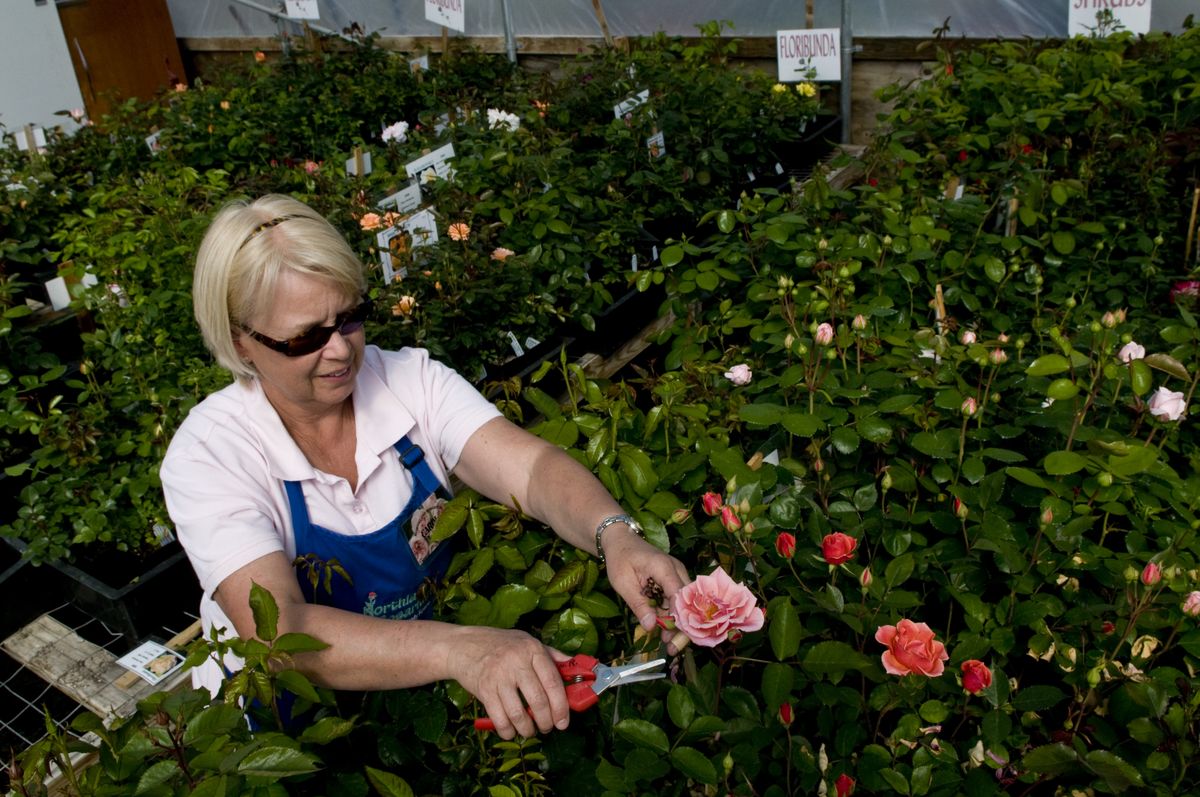Rosy outlook
Even the most inexperienced gardener can grow healthy bushes with little effort

Surely there is no garden flower more admired than the rose. With thousands of varieties available, there is a rose out there for everyone.
“Regardless of your gardening experience, you can grow roses,” says Master Rosarian Lynn Schafer. “Prepare the soil, provide the food and water, allow for air circulation and protect them from the cold winter weather, and you will keep them happy and healthy for years to come.”
“Roses are really easy,” adds Carol Newcomb, president of the Spokane Rose Society and owner of Northland Rosarium. “Our goal is to educate gardeners on how easy they are to grow.”
Roses can be purchased at practically every nursery and garden center in the area.
“The number one thing gardeners should remember is to buy a plant that is appropriate for this region,” Newcomb says. That means buying a rose that is hardy for USDA zone 5.
“Sometimes a person will buy a plant that isn’t hardy enough, they’ll lose it and get discouraged,” she says.
The next important concept to remember is that healthy plants are much more resistant to insects and disease. By watering roses regularly and giving them fertilizer, they will stay healthy.
Gardeners also need to plant roses correctly.
“Roses need a nice place to reside,” Newcomb says. “Choose a well-drained site, put something like bone meal or compost in the hole and you’ll have a good experience with them.”
The majority of roses for sale at nurseries have been grafted onto a rootstock. When planting them, the graft should be set 3 to 4 inches below the soil surface.
“This is very important in our cold climate,” Newcomb says. “People are scared to do this but it’s essential. They also should protect the rose over the winter by mounding soil around it in late fall.”
What is unique about the roses Newcomb and her husband Terry sell at Northland Rosarium is that they are growing on their own roots. This gives them many advantages over grafted roses.
They are hardier because there isn’t a graft to protect. As such, they don’t need to have soil mounded over them during the winter, and they are easier to plant because gardeners don’t have to worry about getting the graft planted beneath the soil.
In addition, own-root roses live longer. Since the graft is the weakest point of a rose, they will lose vigor over the years.
Newcomb points out that own-root roses also have more blooms because they tend to have more canes, the upright stems on a plant. Grafted roses often send up suckers from the rootstock, a problem that can’t occur on an own-root rose.
How are they propagated?
“We take cuttings from our own garden from spring to fall and propagate them in our greenhouses under a misting system,” Newcomb explains. “The plants we sell are one to two years old, depending on the variety.”
Whether you start out with a grafted rose or one growing on its own roots, annual rose care is the same. They need at least six hours of sunlight per day in order to bloom well.
In March or April, roses should be pruned to remove branches that were broken or damaged during the winter. Crossing branches should be cut out and the center of the bush opened up for air circulation.
When pruning back the cane tips, make sure your cut is right above an outward-facing bud.
“We don’t prune in the fall because that would encourage new growth,” Newcomb advises, “although we might prune off some long canes that could whip around in the winter winds.”
All roses should be fertilized twice a year, once in early spring when they’re starting to grow and again after the first flush of bloom, around the end of June or in early July.
Newcomb recommends using a balanced fertilizer, such as 10-10-10, for the springtime feeding and a “bloom-booster” fertilizer that is high in phosphorus for the summer feeding. She also suggests spreading some alfalfa meal around the base of each plant.
In this region, roses don’t have many problems during the growing season. Aphids and thrips are the insects one might encounter and black spot and powdery mildew can affect the foliage. Garden centers stock products to help gardeners deal with all of these.
With so many different types of roses available, it can be difficult to make a choice. Gardeners can see the different growth habits and blossoms of more than 1,000 rose varieties in Northland Rosarium’s display garden. Manito Park’s Rose Hill also showcases 1,500 roses in 150-plus varieties.
“Roses have such different personalities,” Newcomb says. “It’s what we all love about them. I never get tired of them.”